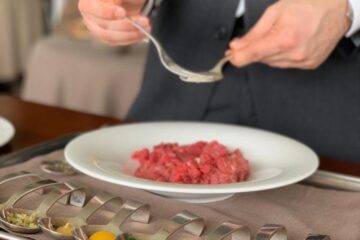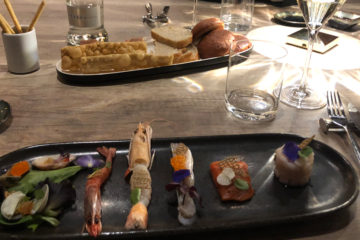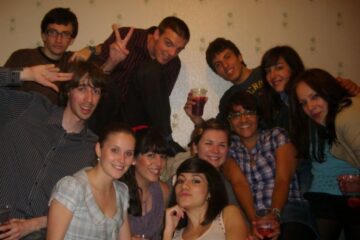Turin Fine Chocolate: where to buy the best chocolate & Gianduiotti
This post may contain affiliate links. Check our Affiliate Program disclosure for more information.
In this post you will learn a bit of Turin Chocolate history and discover helpful tips on the best Chocolate shops in town, the local chocolate delicacies not to miss as well as the best organized chocolate tours! Turin has a strong chocolate tradition which dates back to early 1600s and made it the chocolate capital of Europe from Caffarel in 1826, to Venchi 1878, Novi 1903 and finally Ferrero 1946. Discover the best chocolate houses in Turin and try the delicacies which made it so famous.
- The Origin of Chocolate
- From Cacao tree to chocolate bars
- How chocolate came to Europe
- Turin: Europe Chocolate Capital
- The famous Gianduiotto
- Who invented chocolate: Switzerland or Italy?
- The 4 best Chocolate Houses to Buy Chocolate in Turin
- Top 3 Chocolate pastry shops you’ll love at Breakfast
- Best Turin Chocolate Tours
- The Cioccolato’ Chocolate Festival
1. The Origin of Chocolate
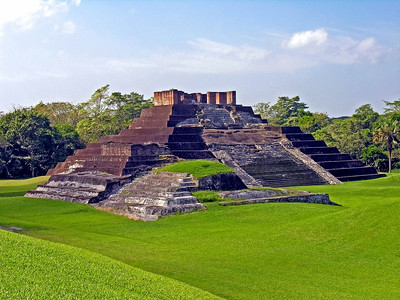
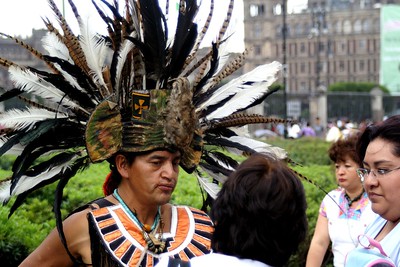
The first traces of chocolate in history go back to 1500 B.C to the Olmecs civilization in South of Mexico and the ancient Mayans of Central America.
Throughout history chocolate was consumed as a beverage rather than as an edible delicacy. Furthermore, its taste was “bitter” as it was combined with sugar only at a much later stage.
The Aztecs were believed to use cacao beans as currency as they were traded in exchange of goods.
2. From Cacao tree to chocolate bars
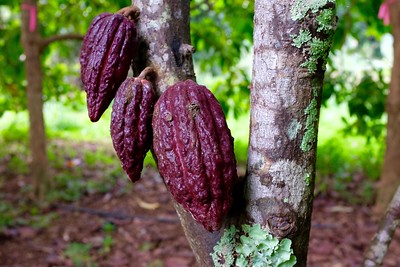
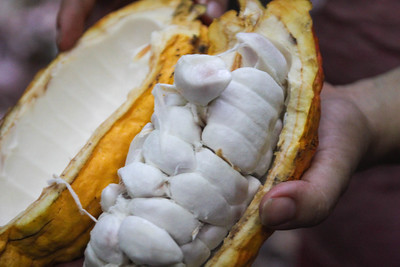
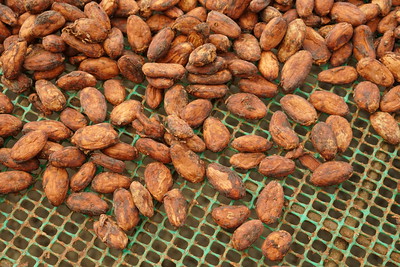
Most of us would not recognize a “cacao tree” if we were to come across one during our travels.
The tree can be up to 10 meters tall with colorful fruits called “cacao pods” which look like red cucumbers.
Each cacao pod has approx. 40 “cacao beans”, each of which is the size of a typical olive. It takes several hundreds of beans to make a Kg of chocolate.
The bean in nature are very different from the ones we are accustomed to see, as they are covered in a white coating which is edible and has a very strong sour taste.
The beans are then are stored in specific containers, during this fermentation process they dry-up and the white coating wears off.
After this step, the bean gets roasted and ground into powder. Chocolate powder is then mixed with sugar and you finally get to chocolate.
Here is very interesting link to an article and video that shows you how chocolate is made at each an evert step.
Difference between cacao and cocoa:
The tree is called cacao. Once the bean has been fermented, roasted and ground into powder it is called “cocoa”.
3. How chocolate came to Europe
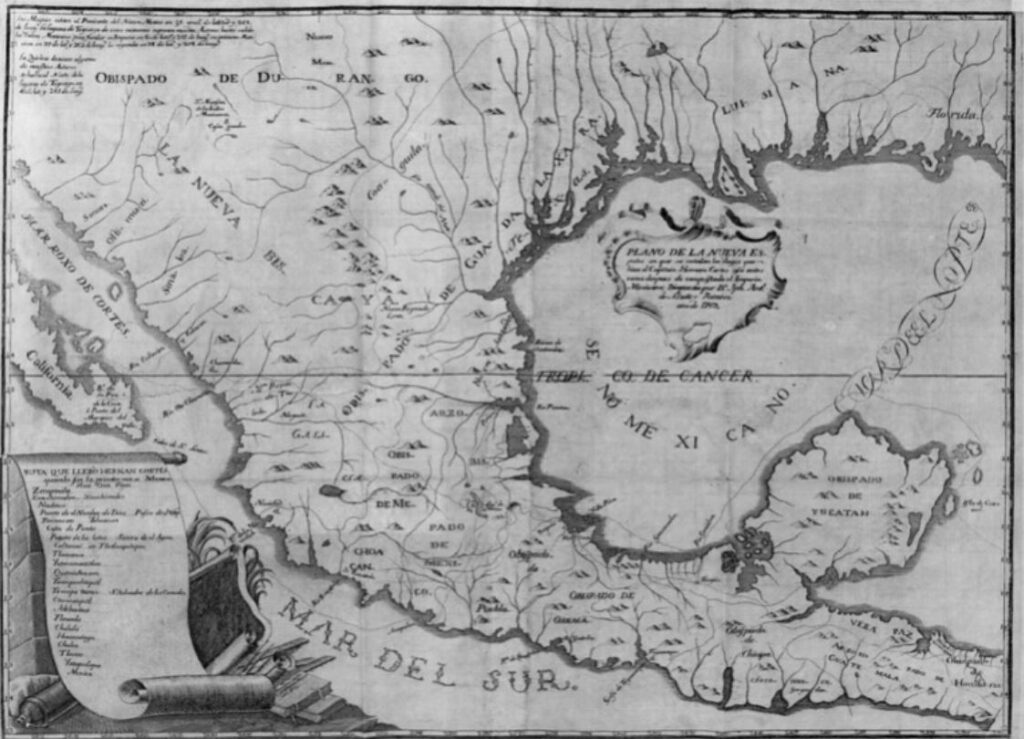
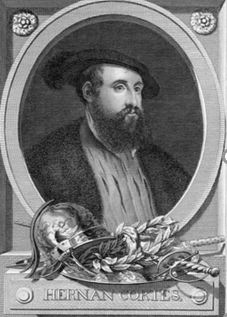
Chocolate arrived to Europe via Spain.
The Spanish conquistador Hernan Cortes discovered it in the early 1500 A.D when he conquered the Aztecs Empire in today’s Southern part of Mexico.
By the late 1500, Spain began importing chocolate to Europe and so did other European countries.
Europeans did not like much the bitter taste of the Aztec’s typical chocolate beverage, so they started making their own hot chocolate variation by mixing it with cane sugar and other spices.
The first chocolate house in Europe opened in England in 1657. It was a drink mainly for the upper class.
Only in the 19th with the Industrial Revolution it became accessible to lower classes , where it was transformed into powder and used in its solid confectionary form as we know it today.
4. Turin: Europe Chocolate Capital
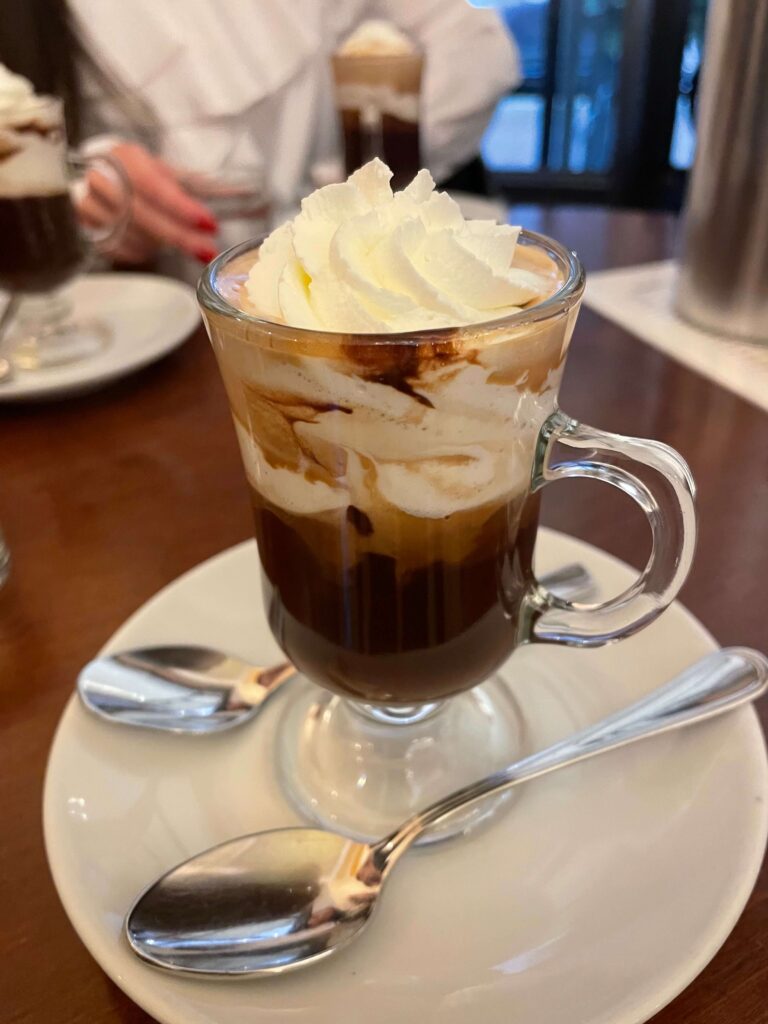
Italy came across chocolate thanks the close tie with Spain due to royal marriages.
In 1584 the Duke Charles I of the House of Savoy, the royal House ruling Italy at the time, married Catherine Michelle of Spain, the daughter of the Spanish ruler Philip II.
In 1678 the chocolatier Gio’Antonio Battista Ari opened in Turin the first chocolate house of Italy. Since then, Turin became the chocolate capital of Italy and a chocolate powerhouse in Europe.
In the 1764 the famous Bicerin was invented in Turin. This is a hot beverage made of cocoa, coffee and cream which is still very famous today. This drink was enjoyed by many famous intellectuals during their visit in Turin such as Friedrich Nietzsche, Alexandre Dumas and Giacomo Puccini.
In case you are wondering where is the best place to drink a Bicerin today you can read my post.
The turning point to Turin popularity was the creation of chocolates in their solid form.
This lead to a long tradition of maître chocolatier and chocolate manufacturers to be created in Turin Area: Caffarel 1826, Venchi 1878, Pastiglie Leone 1857, Novi 1903, Ferrero 1946.
5. The famous Gianduiotto
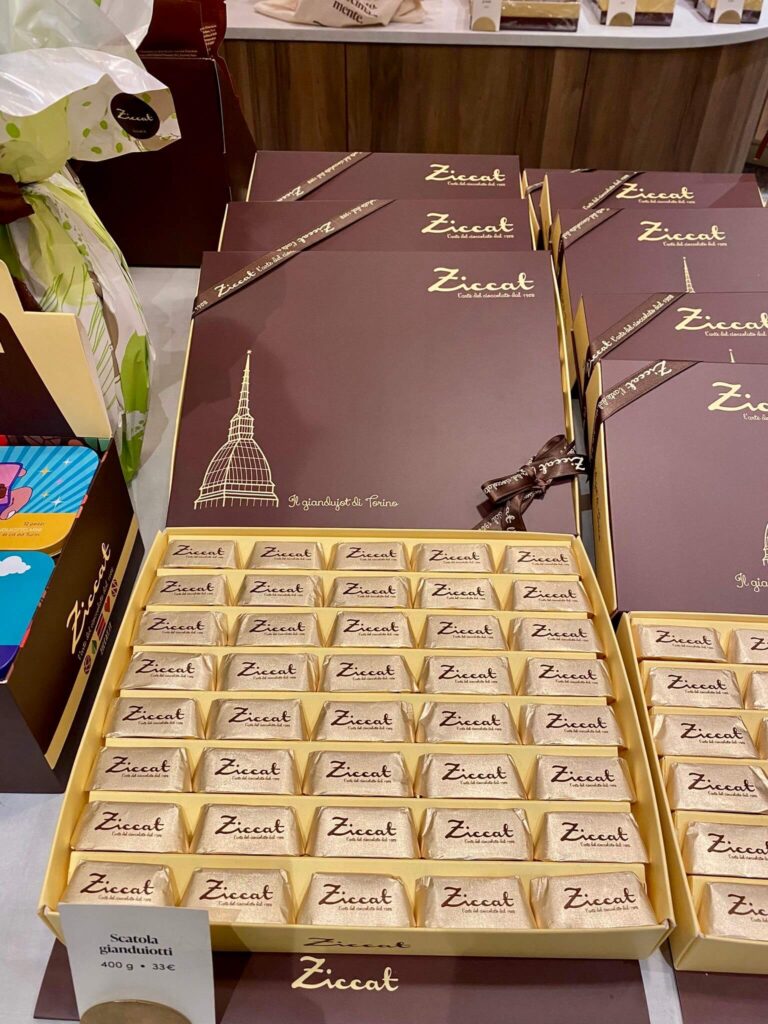
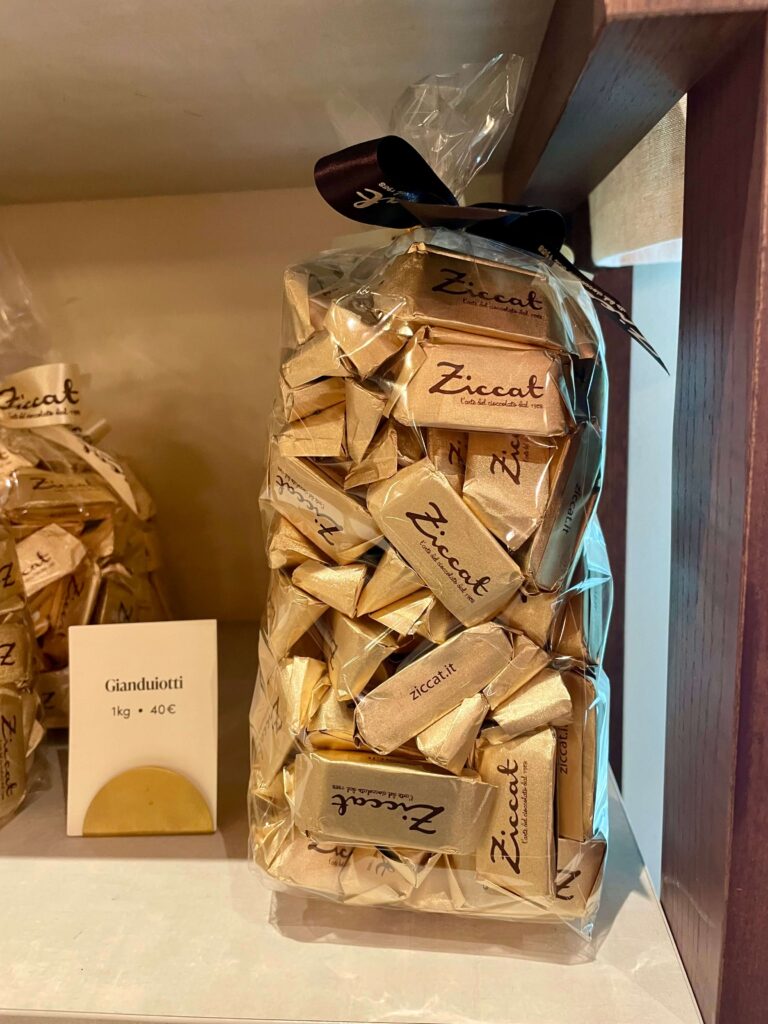
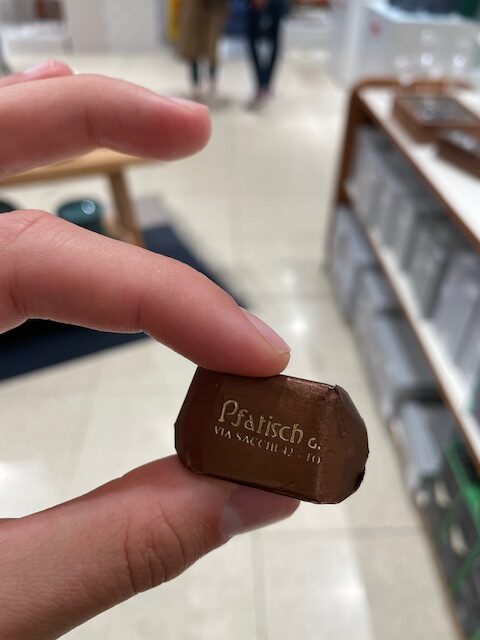
In 1865 the famous Gianduiotto chocolate was created which became of the symbols of Turin.
The Gianduiotto was created by Caffarel for the Carnival of 1865 and it was presented at the 1867 Expo in Paris, it was the first independently wrapped chocolate to have been marketed.
The magic ingredient of hazelnut was added to chocolate and turned out to be the game changer.
The addition of such ingredient was due to the difficulty in getting cacao provisions due to a combination of high demand and difficult supplies related to the Napoleonic wars.
As hazelnut are abundant in the nearby region of Langhe, finely grated hazelnut was used as a cacao substitute. They hit jackpot.
Later on, the successful combination of chocolate and hazelnut was reapplied by Ferrero in to make famous Nutella.
6. Chocolate capital: Switzerland or Italy?
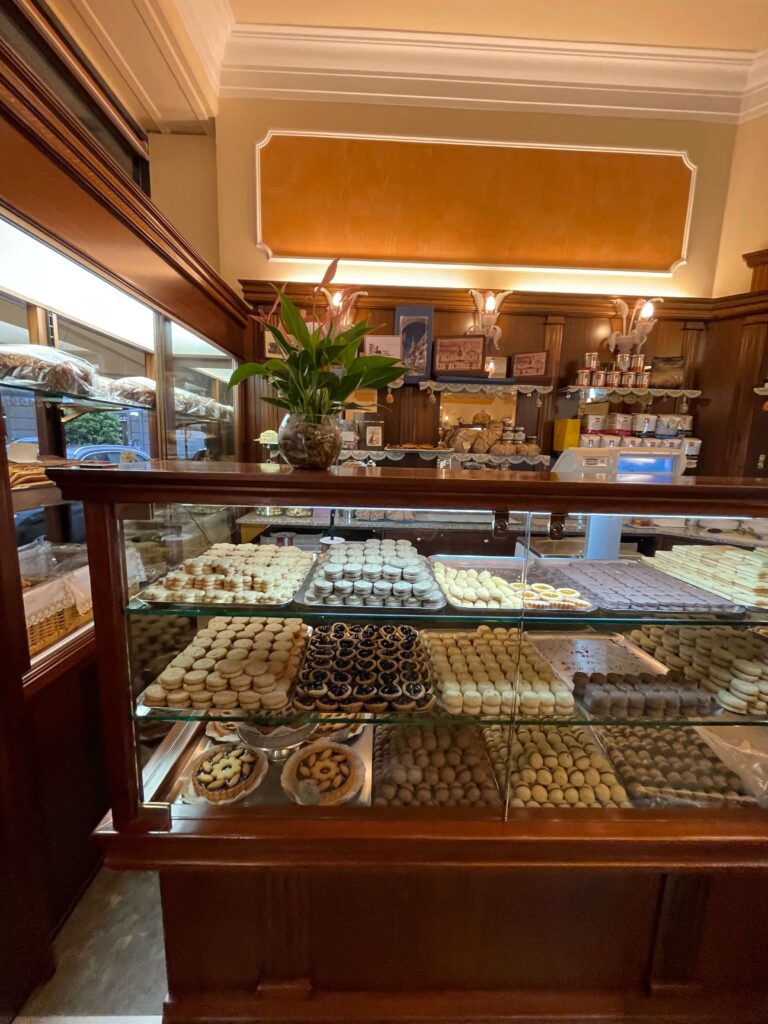
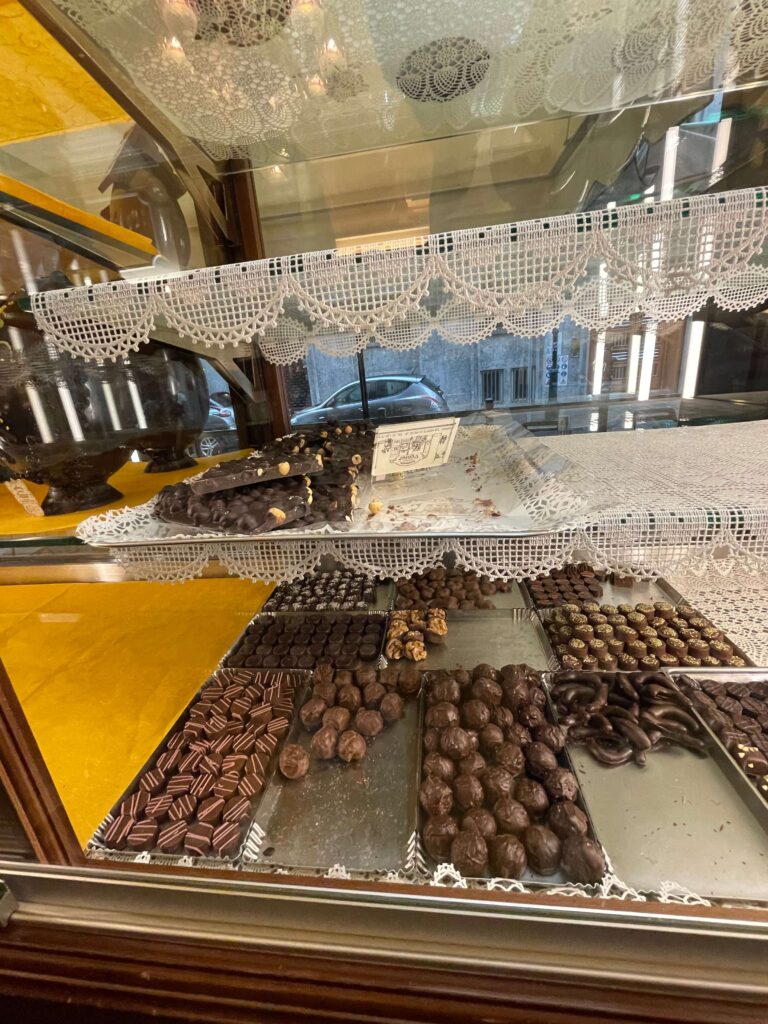
It seems that the first solid chocolate ever to be produced in the world was actually in Turin in 1820 by Pierre Caffarel.
Until then chocolate was only seen under the form of a hot drink.
As a matter of fact Francois-Louis Cailler, the father of Swiss chocolate, admitted that he had the idea of creating the 1st ever mass production chocolate factor in Switzerland, after observing two Italian chocolate artisans in Turin.
You don’t believe me? You can look it up yourself at the following Swiss info web page.
7. The 4 Best Chocolate Houses to buy chocolate in Turin
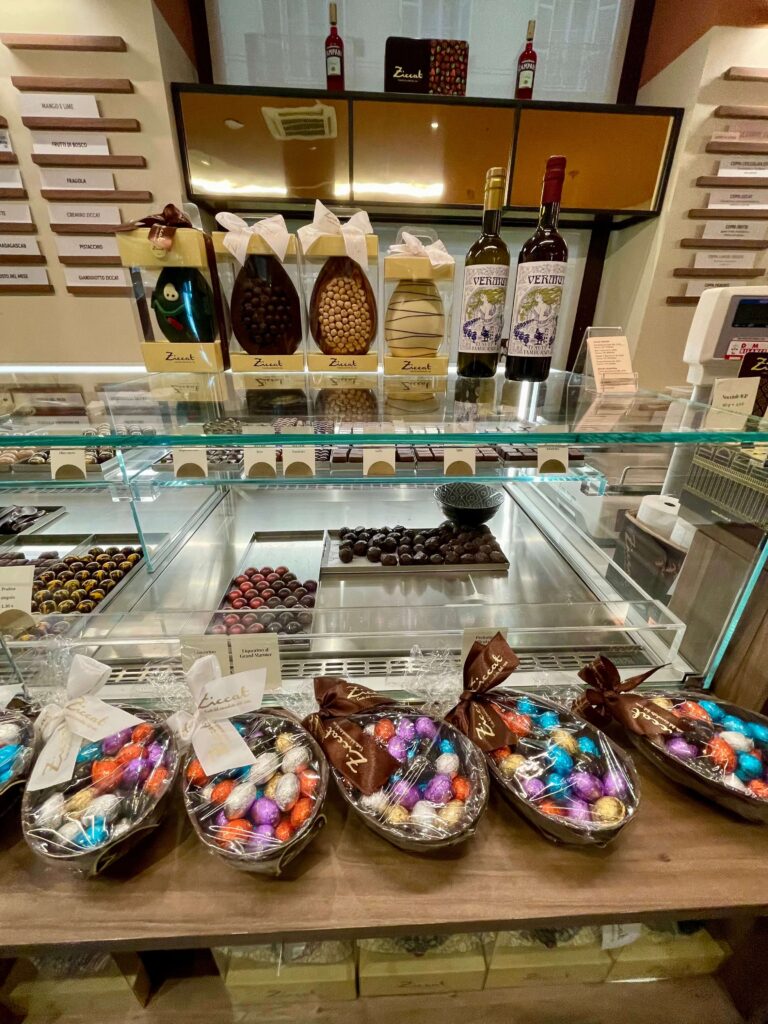
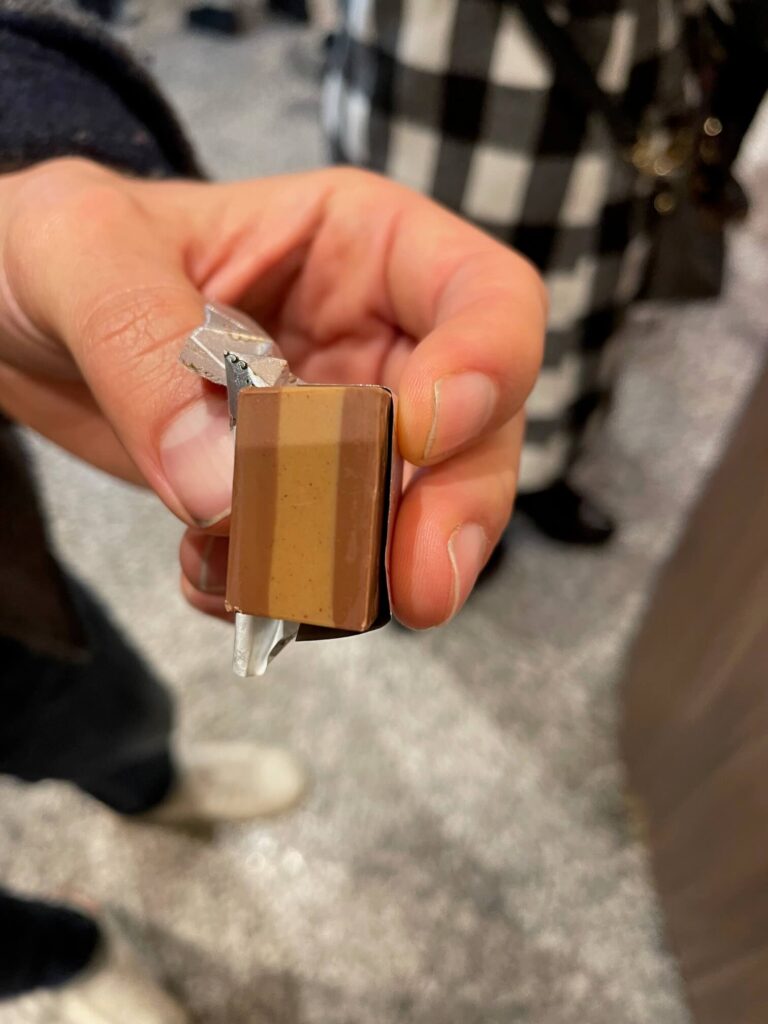
If you are visiting Turin these days, make sure you try out the below chocolate shops.
7.1. CAFFAREL: Where the “Gianduiotto” was created
It goes without saying that there is no better place than Caffarel to taste the true 1865 Gianduiotto. There is a Caffarel shop conveniently located in the city-center right next to the Museo Egizio.
7.2. GUIDO GOBINO: The King of Chocolate Innovation
The favorite chocolatier to many locals is actually Gobino, an award-winning chocolatier.
Though it is a more recent chocolatier than other in Turin (it opened “only ” in 1964), it is well known for their its innovation and quality of its raw ingredients as they work only with carefully selected farmers.
I personally love the below two products from Gobino:
- The Bronte Pistacchio and the Blueberry covered in chocolate
- The “cappuccino” of the Praline Torinesi collection
You can book a private “tasting” either at their shop or at the factory.
Their most famous shop is located in Via Lagrange, in a very beautiful but unusual location inside and ancient Pharmacy shop.
7.3. PEYRANO: The Royal family official supplier
The most famous chocolate house in Turin is Peyrano, the selected supplier of Italy’s royaly family.
One of its signature chocolates is the “alpino” which is a crunchy dark chocolate filled with the secret creamy liqueur.
The drawback is that their shop is in Corso Moncalieri, although it is close from the city center it is simply too far to your way by foot.
7.4. GUIDO CASTAGNA: Hand-made chocolate Tradition
This is another award-winning chocolatier founded in 1897.
What makes Castagna’s chocolate so special is that they mature their chocolate by minimum six months after production.
Located in Piazza San Carlo, the heart of Turin city center it offers a wide range of chocolates, pralines, chocolate dipped orange slices and so forth.
All their products are rigorously hand made.
8. Top 3 pastry shops you’ll love at Breakfast
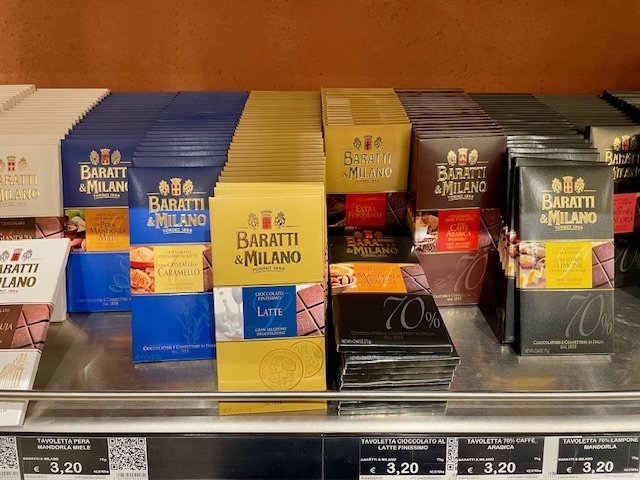
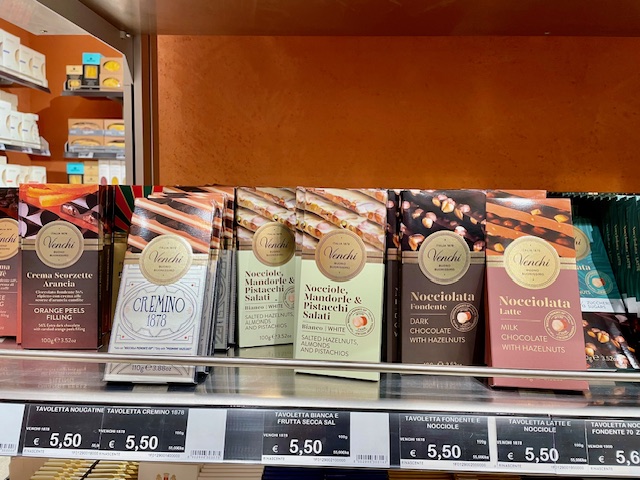
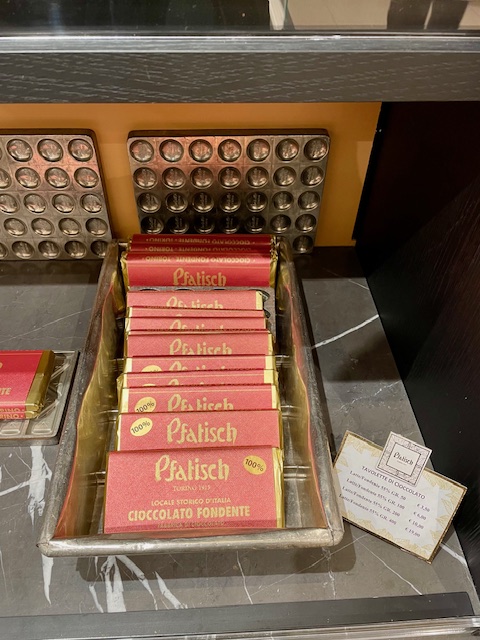
1.CONFETTERIA STRATTA 1836
Italy’s first ever Prime Minister Camillo Conte di Cavour was a regular customers of this fascinating historical café with strong tradition of high-quality chocolatier.
Recommended also for breakfast as the quality of their coffee is quite good and it has tables outside right in the middle Piazza San Carlo.
Their signature chocolate is “Gioie di Cavour” which are basically chocolate boules covered in finely grated hazelnut with a gianduja cream in the inside.
2. BARATTI & MILANO 1858
Another well known chocolate house is the one founded in Turin by the two “Piedmontese” artisans Ferdinando Baratti and Edoardo Milano.
They are famous for inventing the “cremino” in late 1800s a chocolate made of three layers of chocolate, two which of gianduja and the one in the middle of chocolate and hazelnut paste.
I highly recommend to go to Baratti for a good Espresso coffee and try the cremino.
They are located in an elegant café in a spectacular location which is inside the marvelous Galleria Subalpina.
3.GUSTAVO PFATISH 1915
This is not really a chocolate house but a over 100 years old historical pastry shop.
I highly recommend to go there for breakfast there to have a good coffee, try one of their pastry delicacy or amazing mini sandwiches.
It is located in Via Sacchi, next to the Porta Nuova train station.
09. Best Chocolate Tours
If you want to taste in one go all the most popular chocolate delicacies of Turin, you may want to consider opting for an organized tour.
It could also be a good way to learn some interesting curiosities & anectodes that you can impress your friends with once you head back home.
Some will make you taste the full span of local chocolates: Giandujotto chocolate, Zabaglione, Cri-Cri chocolate, Italian chocolate Gelato as well as the famous Bicerin. You can’t go wrong.
I’ve added a few options below in case of interest. Thought it might be handy. Let me point out that if you click and make a purchase, I will receive a small commission at no extra cost for you. Hope it helps.
10. Cioccolato’ chocolate festival
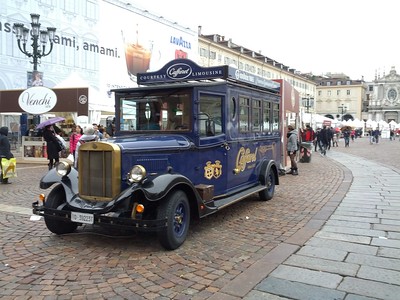
To celebrate its strong chocolate tradition Turin organizes every year the Turin Chocolate Festival called “Cioccolato” since 2003.
The event normally lasts for two week-end and it takes place either in Piazza Vittorio Veneto or in Piazza San Carlo and it gathers around 400,000 visitors.
It consists of over 100 chocolate artisans from all over the world presenting their products and offering free samples each in their stands right in the middle of the Piazza.
In addition to that, there are several chocolate-related events such as conferences, performances and workshops.
The objective is to bring together the best chocolate masters to spread the tradition of chocolate and increase its excellence.
